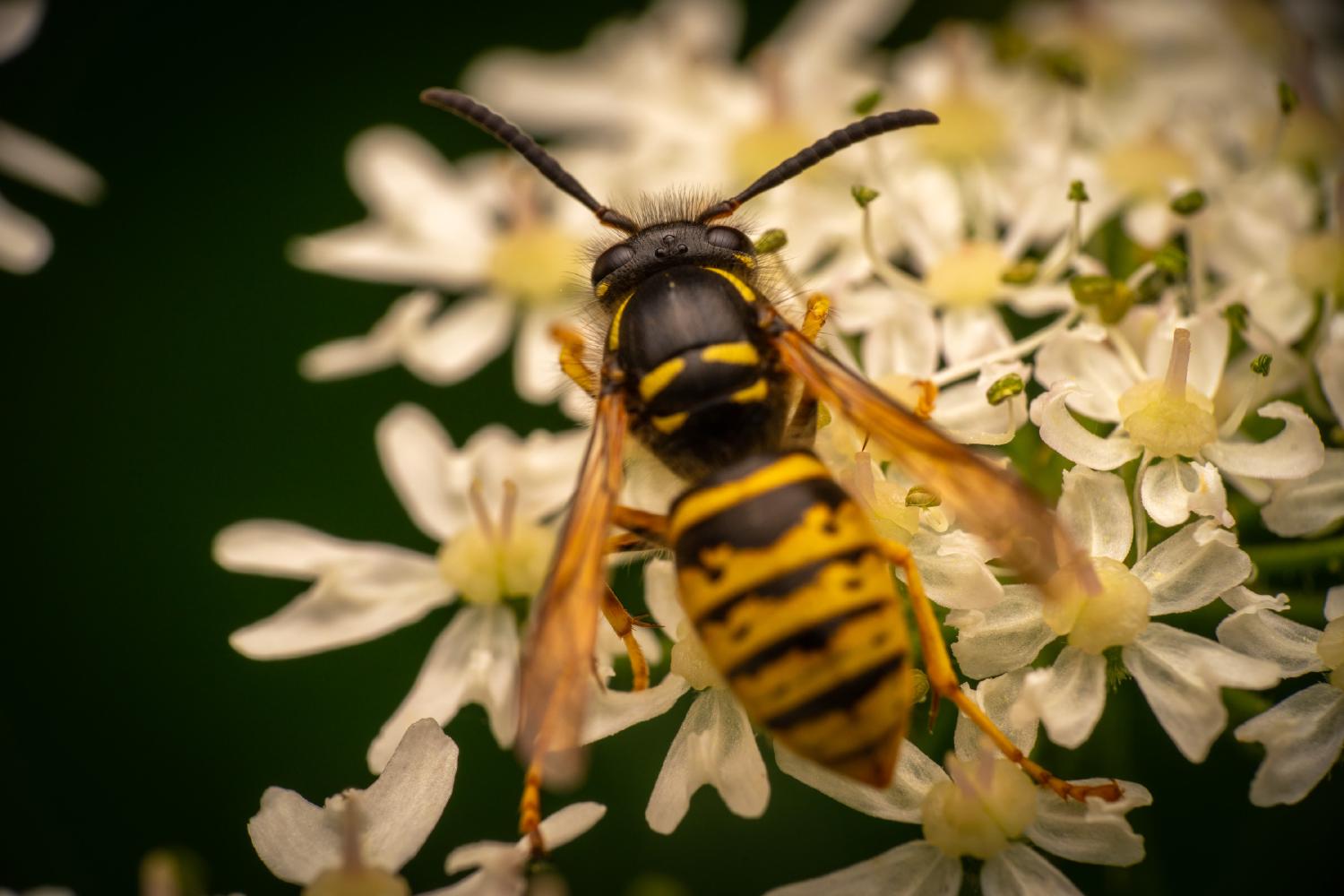Saxon Wasp
Lat. “Dolichovespula saxonica“
species
of family
“Hornets, Paper Wasps, Potter Wasps, and Allies“
1 species
The Saxon wasp belongs to the Vespidae family, specifically the Dolichovespula genus, known for its long-faced characteristic. It is closely related to the Vespula genus and both are part of the yellowjackets group. Dolichovespula species typically build aerial nests with about a thousand cells and have a colony cycle lasting three to five months. The Saxon wasp, D. saxonica, is larger than most yellowjacket species and has distinct physical features like black and yellow stripes. They are aerial nesters, constructing ball-shaped nests from rotting wood. These wasps are found in Europe and parts of Asia, nesting in various habitats including forests, countryside, and urban areas. Their colony cycle involves queens surviving winter and starting new colonies in spring, with the colony peaking in size around mid-summer before declining in late summer.
Taxonomy and phylogenetics
The Saxon wasp is part of the family Vespidae, a large family of varied wasp species. Within the Vespidae is the genus Dolichovespula, which is derived from the Greek word “dolikhos,” meaning “long.” This describes the characteristic long face found within the genus, as opposed to the short and round faces found in the genus Vespula. Dolichovespula contains 18 species, including D. saxonica, and most are found throughout the Northern Hemisphere. Dolichovespula is closely related to Vespula, and species from both genera constitute the yellowjackets. Many of the species within Dolichovespula choose aerial nest sites, though most illustrate flexibility in nest site locations. This differs from the genus Vespula, whose members often make subterranean nests. Dolichovespula species typically have mature colonies of about a thousand cells with about two thousand adults and a colony cycle that lasts three to five months.
Description and identification
D. saxonica is similar to its yellowjacket relatives with the black and yellow stripes on its body. However, the Saxon wasp is larger than most of its relatives. The Saxon queens are largest with a body length ranging from 15–19 mm (.59–.75 in), while the males range from 13–15 mm (.51–.59 in) and the workers from 11–15 mm (.43–.59 in). The male body consists of a copulatory casing at the end of their gaster and seven gastral tergites – hardened plates, or sclerites that are divided on the dorsal side of the body – and sternites, which are sclerites on the ventral side of the thorax. On the other hand, the female has six gastral tergites and sternites and a sting at the end of their gaster.
D. saxonica is an aerial nester, meaning that the wasps build their nests above ground, often in trees, shrubs, or buildings. The nests of D. saxonica are ball-shaped and can be roughly 250 mm (9.8 in), which is small relative to other wasp nests. Nest construction is done quickly, allowing the nest population to increase rapidly. On average, nests contain three to five combs, while a large nest can contain up to five. The Saxon wasps build their nests from rotting wood, using the fibres from the wood to form a grey coloured nest that can contain yellow lines or patches on the exterior. The external side of the nest is smooth and does not have any ventilation holes. Instead, there is a single opening at the bottom where wasps can enter and exit and where waste can leave the nest.
Distribution and habitat
The Saxon wasp is commonly found in most of Europe and in northern and central Asia. Areas where the species can be commonly found include the United Kingdom (Southern only), the Czech Republic, northern France, the Netherlands and most recently the east of Ireland in 2020. Within these areas, the nests of D. saxonica can be found hanging freely in various forest types, the open countryside, and wooded hills. Since these wasps are aerial nesters, the nests are often hanging on tree branches or shrubs, a couple meters off the ground. Urban areas are also suitable habitats for D. saxonica. As a result, their nests have been found under roofs, porches, park benches, and on the sides of buildings. Despite this flexibility in nesting sites, rarely are subterranean nests found.
Colony cycle
Similar to other wasp species, colonies of D. saxonica build up during the summer time and decline during the winter. Queens are the only ones capable of surviving the winter due to their form of hibernation called overwintering, which occurs within sheds, hollow trees, or other similar cavities. The queens that do survive the winter find a new colony in the springtime, around April to early May. Their job is to find a good nesting location and rear the first set of workers. By early June, the first set of workers emerges, begins to expand the nest, and builds large-cells for potential gynes. In early July, the new queens emerge and mate, leading to the end of the colony around mid-August. At the peak of the cycle, there may be a few thousand wasps. This entire cycle is roughly 3 to 4 months long, though the exact timing of events is heavily dependent on weather. When the temperature drops and winter arrives, the cycle begins again.
Ancestry Graph
Further Information
Copyright

This article uses material from the Wikipedia article Dolichovespula saxonica the free encyclopedia Wikipedia which is released under Creative Commons Attribution-ShareAlike 4.0 International License). On Wikipedia a list of authors is available.
